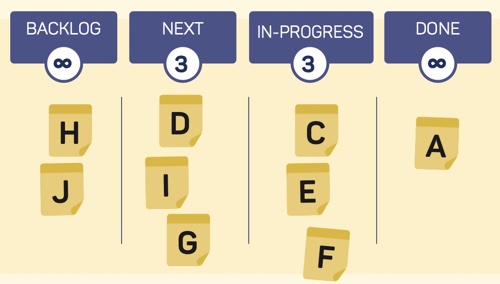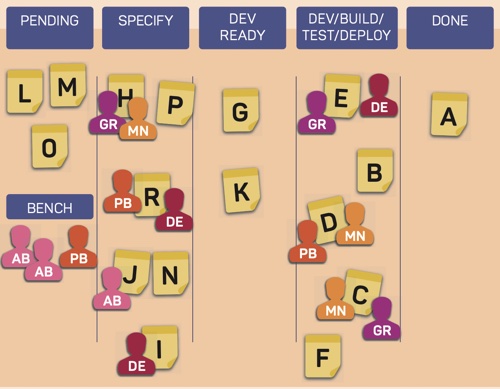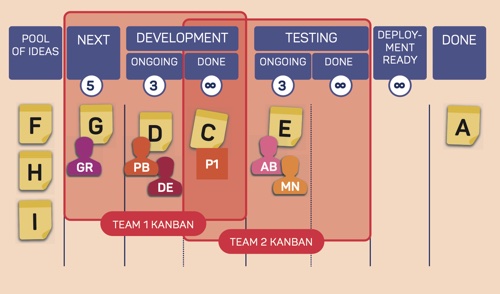Having worked for a long time and tightly in the field of application of the Kanban method, having gone through the evolution of its perception , digging deep into the mechanics, including as a coach and as a consultant, I want to share with you some conclusions that will help connoisseurs not overload young people with unnecessary information, but for beginners do not dig into theoretical material and take only the applied things they need in their work.
Let me start with teaching approaches.
Kanban training. Canon
The most complete and canonical courses on immersion in the Kanban Method are considered to be the classes that are developed by Kanban University - the structure of David Anderson, the author of the method.

The University now has four (well, five) large theoretical modules , gradually immersing in the profession, and two adjacent ones , allowing you to take an even broader look at work and service improvement.
Straight ruler:
Team Kanban Practitioner (you can skip it, this is a popular squeeze-out of basic things for the initial immersion in the topic)
Kanban System Design
Kanban System Improvement
Kanban maturity model
Kanban Coaching Practices
Adjacent ruler:
Fit for Purpose (covers the topic of product management and customer service)
Enterprise Service Planning ( )
– , , , -.
, , .
. , . , , .
, - . , . 4 (!) .

. , , , . , Kanban: Successful Evolutionary Change for Your Technology Business ( «. »).
, . , , . – , , ( -) .
, – , .
. « »
«» «-» , « » ( ) .
«» , , , « . ». « », -.
, , . – , «», , .
, . , .
.
, , . , , , .
, , , .
– .
– .
,
? . – .
-, , , -. – , , - .
-, , , .
, , , . , , , .
, - . .
« » , « , ».

, .
«» , . , « = », .
?
– , , . . , « » « ».

( WIP-) – .
, , , , .
, , - , . , , , , .
:
( , , , )
? , , « = », .
, , , , , . – ( – , ) « , « » – , CONWIP-.

, , . . (, , – .)
– , . . . , « , ?», « ?», « , ?», « , , ?».
, «», . , .
STATIK (system thinking approach tointroduce Kanban, «-: »)

-, , Fit for Purpose, :
– ,
(, , , )
- – , - ?
. – , : ; ; ;
Upstream-. , , . – , , -.
: T2M Lead Time – , ; Fit for Purpose criteria – ;
-
. - , .
- – , , . .
– , - ( -) « , ?»
, , - , . , , .
, , .
?
, , , . , , , (KSD, KSI, KMM) Fit for Purpose. , , , .
In one article, unfortunately, it is difficult to fully disclose all the aspects that I want to convey to the audience, but, using the examples described above, I hope I showed how the Kanban method can choose for everyone their own approach and a "set" of those practices that will help to make work convenient and efficient.
Good luck to everyone in improving their own work!